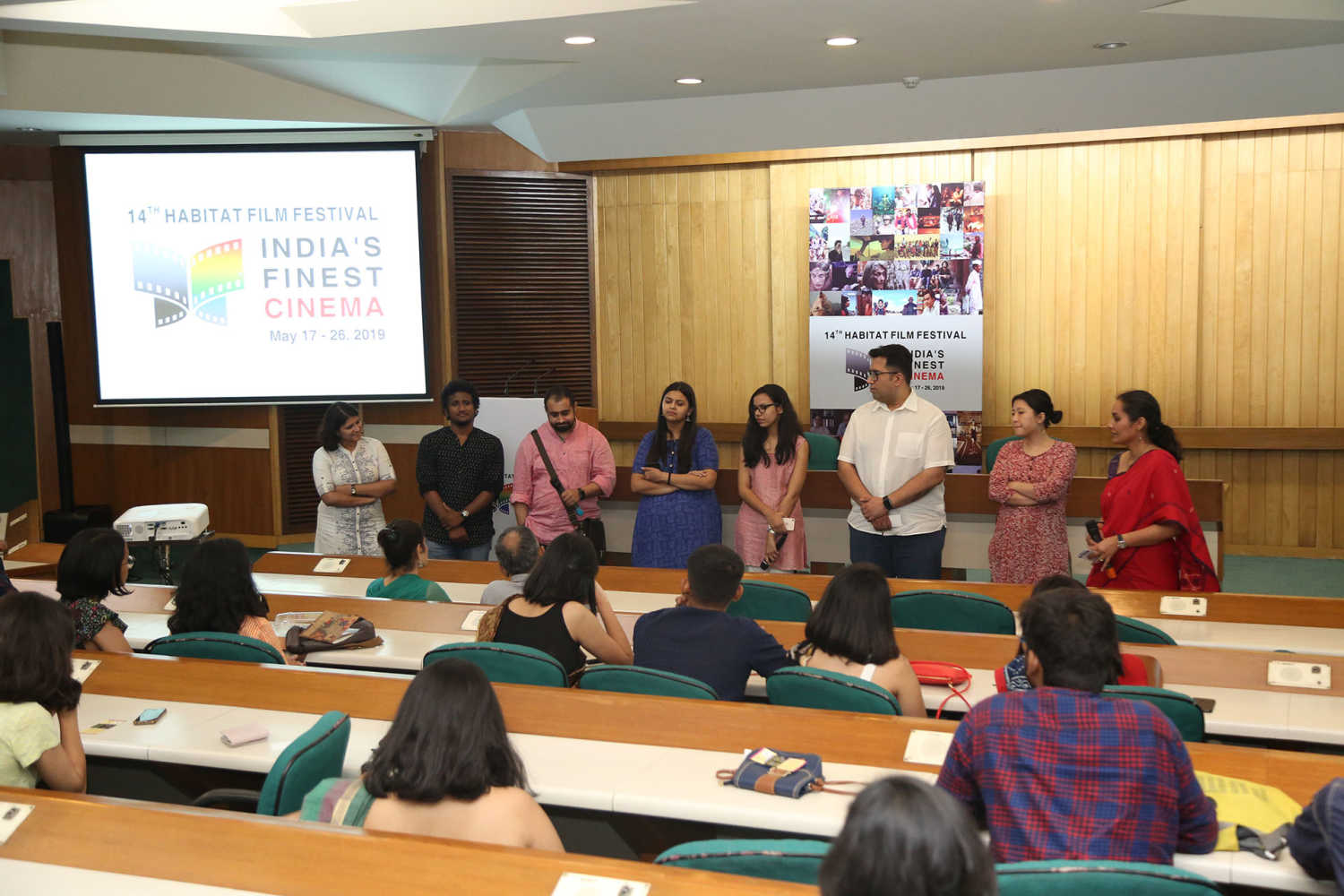It is great to see a film festival give a platform for students to showcase their work and for audiences, producers, and others to discover new voices.
Habitat 2019: Showcasing student films with diverse voices
New Delhi - 05 Jun 2019 9:00 IST


Sahil Bhalla
Short films come in different shapes and sizes. They are contrasting, yet strikingly similar in many aspects. Student films more so. The 14th edition of the Habitat Film Festival, for the very first time, introduced a ‘student films’ section and the audience embraced it.
Shorts from the Film and Television Institute of India, the Satyajit Ray Film and Television Institute, the National Institute of Design and other places were shortlisted and neatly assembled into four different packages.
The experimental fiction package that ran on the afternoon of 25 May — seven student shorts — had something for everyone. That much was evident from the diverse set of people who assembled to watch them, despite popular feature-length films playing inside the other auditoriums.
After watching the shorts, you wondered why the directors and their artistes aren’t more popular. You wondered why these filmmakers aren’t doing feature-length films. One won’t necessarily like all the shorts within a package, but one would definitely appreciate these first-time filmmakers seeing their vision through to the screen. They do have the talent.
One of the shorts that immediately jumped out at you was Sarthak Bhasin’s Ekaant. It gave you Mad Max/Blade Runner 2049 vibes, and that is one of the best compliments one can give a first-time filmmaker. Despite it not being shot on location, the maturity of the filmmaker could be seen from the get-go. To have the vision to make it in black-and-white gives it a leg up on other films. Hardly any black-and-white films make it to the screen these days.
Ekaant is set in a post-apocalyptic world with the protagonist navigating a world where he is the only one present.
Contrast that with Stains, a 30-minute short about menstruation, made by NID graduate Rhea Mathews. It’s a fiction film dealing with a very real and down-to-earth subject. It brings to light a couple, from different cultural backgrounds, dealing with daily life. To touch upon a sensitive topic in Indian society with such maturity is a great sign for the future of Indian filmmaking. A shoutout to the lead actress who played her role like she had been acting for many years.
Then there was Debottam Basu’s Jangiya, about a graphic designer who, after a late night, falls asleep on a Bombay local and wakes up in his office like he has never seen before. Dealing with issues of insecurities, this short infuses humour with ridiculousness. It’s the script that sets this apart from other shorts.
A five-minute short called What Is The Colour Of The Colourless Sky, by Faisal Saleem and Nabina C, immediately grabbed your attention with music from Tajdar Junaid. It’s a breezy watch about the world around us.
Another film, Aapatti, was made by Celluloid, the film club of Miranda House, in just 48 hours, an incredible feat for any film. Only four minutes in length but with a lot of soul from the two actresses, and a crazy ending, there is a lot going for it. It’s about Devika, a tea-leaf reader, who lures Sheela into one last session. The downward spiral happens faster than you can imagine.
When Tree Rains by Georgy Abraham and One From My Worries by Manoj M continued the trend of having something for every audience. The former is about a film being made within a film. It’s meta, in many ways, but also a thriller in others. The latter is about two brothers who go back to their house to retrieve the items they can, with raw performances.
What drew your attention were the stories. You wondered how these students came up with such differing storylines. It is great to see a film festival give a platform for students to showcase their hard work and for audiences, producers, and others to discover new voices in the industry.
Experimental shorts give the filmmaker the chance to be as whacky and out-of-the-ordinary as possible. With this package, that could definitely be seen. You could tell that a lot can be done within a few minutes.
If there is ever a short-film festival playing near you, drop everything and go and see a couple of them. With a growing appreciation of shorts — Tata Sky has launched a Shorts channel — and a larger number of filmmaking students from India, the future is bright.
Related topics
Habitat Film Festival


